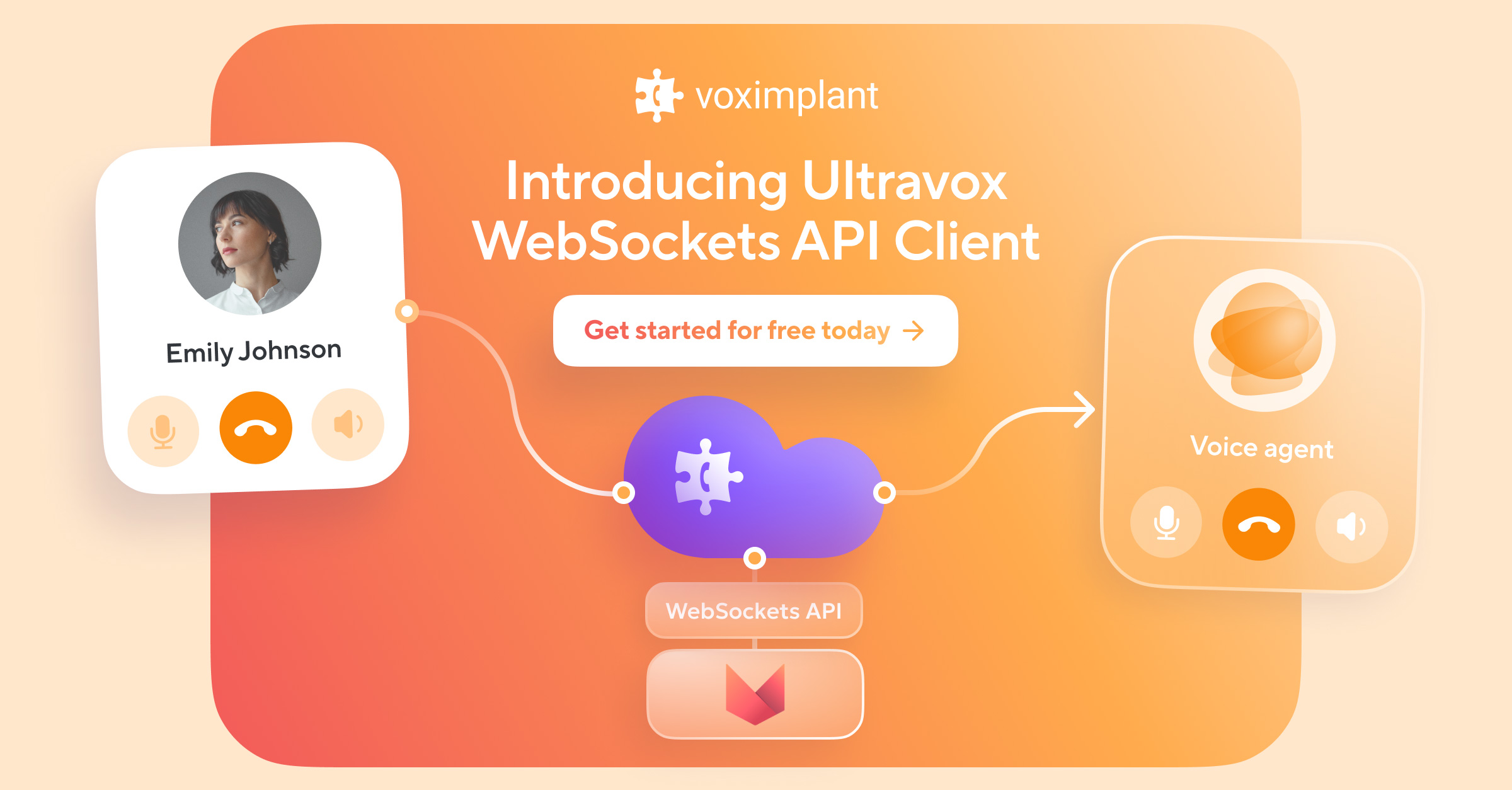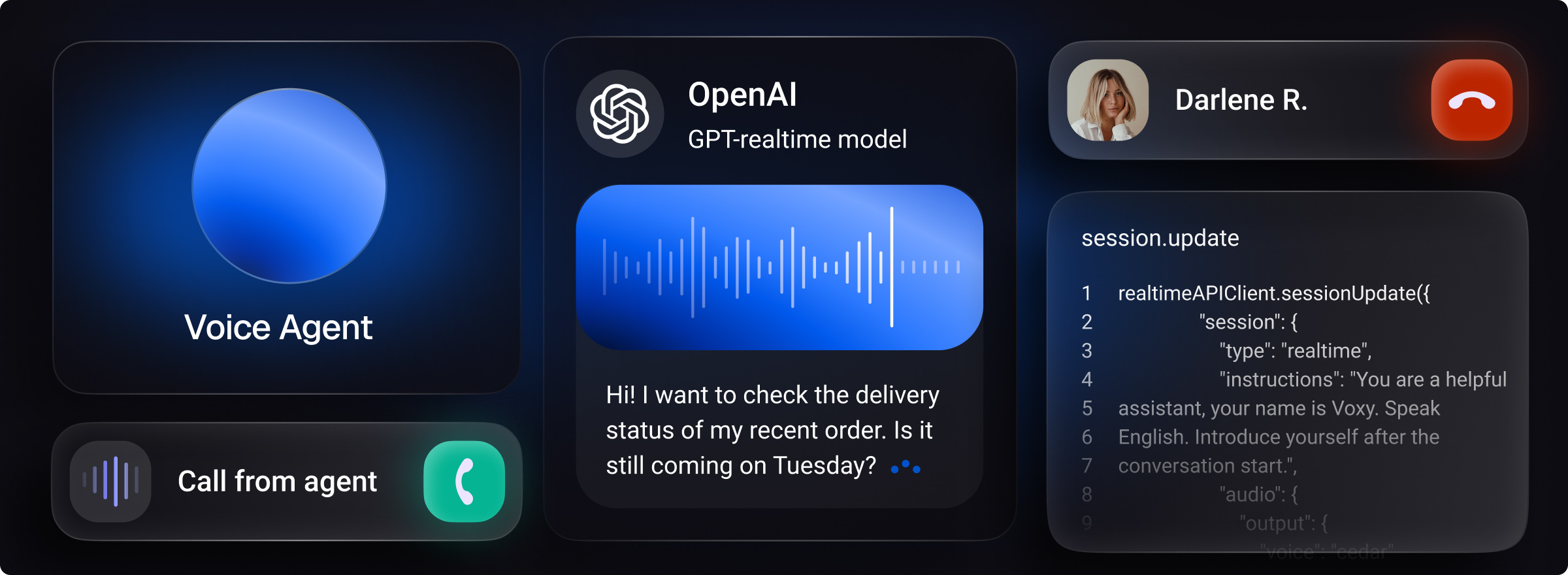In today's digital landscape, a strong online presence is essential for businesses of all sizes. A well-designed, informative website serves as a powerful tool to enhance brand credibility, expand reach, and drive conversions. It acts as a virtual storefront, often forming the first impression for potential customers.
However, the process of developing an effective website has traditionally been perceived as a complex undertaking, particularly for entrepreneurs and small business owners. Conventional wisdom suggested the need for a multidisciplinary team, including web developers, designers, and content creators - a resource-intensive approach that could be daunting for many.
Enter the era of no-code website builders. These innovative platforms have democratized web development, empowering individuals with little to no technical expertise to create polished, user-centric websites and implement effective digital marketing strategies. By leveraging intuitive drag-and-drop interfaces and pre-designed templates, these tools enable businesses to establish a professional online presence without delving into the intricacies of coding.
This technological shift has leveled the playing field, allowing businesses to focus on their core competencies while still maintaining a compelling digital facade. No-code platforms offer a streamlined path to achieving online objectives, from boosting brand awareness to facilitating e-commerce, all without the need for extensive technical knowledge or significant financial investment in web development resources.
Understanding No-Code Website Builders
No-code website builders are revolutionary platforms that democratize web development, allowing individuals of all technical backgrounds to create sophisticated online spaces. These intuitive tools employ user-friendly interfaces and pre-designed templates, transforming the website creation process into something akin to assembling a digital jigsaw puzzle.
As the digital realm continues to expand, these platforms have gained significant traction. They offer a budget-friendly alternative for businesses looking to establish their digital footprint without the need for specialized web development expertise. Whether you're envisioning a thought-provoking blog, a bustling e-commerce hub, or a visually striking portfolio, no-code builders can accommodate a wide array of digital aspirations.
However, the appeal of no-code builders extends beyond mere simplicity. These platforms pack a punch with robust features that rival traditional web development methods. From search engine optimization tools to seamless integration with external services, no-code builders empower users to craft dynamic, tailored websites that align perfectly with their unique objectives. To complement your website's SEO capabilities, explore our guide on the most effective SEO tools available this year.
By leveraging these tools, individuals and businesses can bypass the traditional barriers to web presence, allowing them to focus on content creation and strategic growth rather than grappling with complex coding languages. This accessibility has opened up new avenues for digital expression and commerce, leveling the playing field in the online landscape. Additionally, for those looking to enhance customer interactions, integrating a powerful cloud contact center like Voximplant Kit can further streamline communication efforts.
No-code website builders offer a streamlined path to achieving online objectives, but integrating these platforms effectively can enhance their functionality. Discovering the best iPaaS solutions in 2024 can provide robust integration options to complement your chosen builder's capabilities.
Selecting the Ideal No-Code Website Builder
When selecting a no-code website builder, several factors should guide your decision:
1. Intuitive User Experience.
Prioritize platform offering:
- Effortless layout manipulation
- Real-time visual feedback
- Straightforward element integration
The ideal platform should feel natural and require minimal learning, allowing you to focus on creativity rather than navigation.
2. Customization Flexibility.
Look for builders with:
- Diverse template options
- Extensive design libraries
- Customizable color and typography controls
While some platforms offer advanced customization, remember that increased flexibility often correlates with complexity. Seek a tool that strikes the right balance between creative freedom and user-friendliness.
3. Streamlined Content Management.
Evaluate the builder's:
- Intuitive editing interfaces
- Organized content structuring
- Potential integrations with familiar tools (e.g., Google Sheets) for seamless data management
4. Cost-Effectiveness.
Consider the platform's value against its:
- Features and support offerings
- Long-term suitability for your needs
5. Integration Ecosystem.
Ensure compatibility with:
- Email marketing platforms
- E-commerce solutions
- Analytics tools for enhanced functionality and digital strategy alignment
By carefully evaluating these aspects, you can select a no-code website builder that not only meets your immediate needs but also supports your long-term digital goals.
Top 7 No-Code Builders
Webflow: Comprehensive No-Code Design Solution

Webflow stands out in the no-code landscape as a robust platform that integrates design, content management, and hosting into a single, cohesive ecosystem. It's particularly well-suited for design professionals and developers seeking unrestricted creative freedom without delving into traditional coding.
Key Features:
- Interface reminiscent of professional design tools
- Visual approach to website creation and launch
- Responsive design capabilities built-in
The platform's design-centric approach makes it an attractive option for those with a background in graphic design tools. However, this sophistication comes with a trade-off: Webflow's interface is generally considered more complex compared to other no-code solutions.
Advantages:
- Extensive customization options
- All-in-one solution (design, CMS, hosting)
- Mobile-responsive design support
Challenges:
- More demanding learning process
- Premium pricing structure
Pricing: Entry-level plans begin at $14 monthly, with scalable options available for more extensive projects.
Webflow occupies a unique niche in the no-code market. It caters to users who prioritize design flexibility and are willing to invest time in mastering a more sophisticated tool. While it may not be the most straightforward option for absolute beginners, it offers unparalleled creative control for those ready to explore its full potential.
The platform's integration of design, content management, and hosting eliminates the need for multiple tools, potentially streamlining workflow for design professionals. However, prospective users should weigh this convenience against the steeper learning curve and higher cost structure.
Ultimately, Webflow represents a powerful choice for those seeking a no-code solution that doesn't compromise on design capabilities, provided they're prepared for a more involved learning process.
SpreadSimple: Spreadsheet-Powered Website Creation
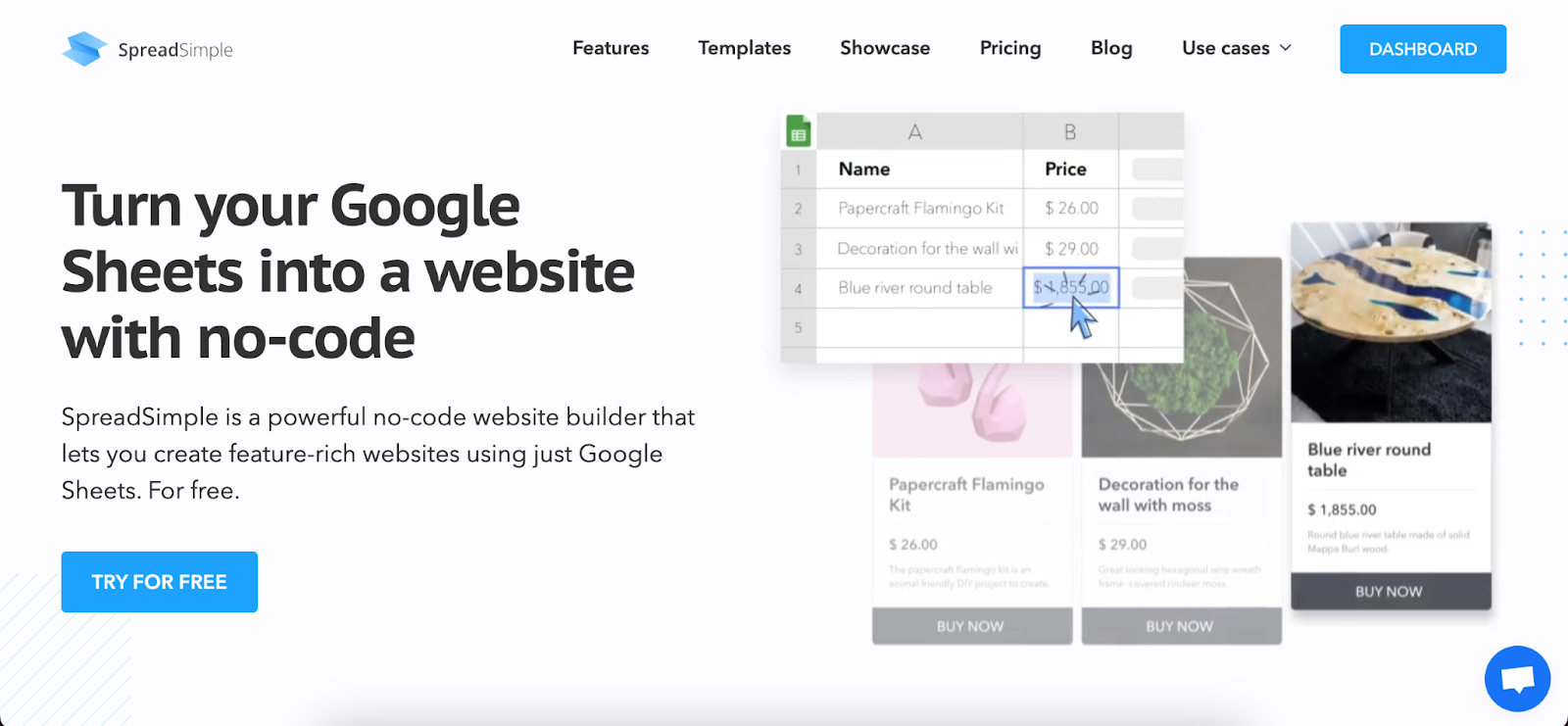
SpreadSimple offers a unique approach to no-code website development by leveraging the familiarity of spreadsheets. This innovative platform seamlessly integrates with Google Sheets, transforming the content management process into a familiar and accessible task.
Key Features:
- Intuitive, user-friendly editor
- Google Sheets integration for content management
- Versatile application (e-commerce, catalogs, affiliate sites, etc.)
- Rapid website creation (as quick as 30 minutes post-registration)
The platform's standout feature is its simplicity, eliminating the typical learning curve associated with website builders. This approach makes it particularly attractive for those who prioritize ease of use and quick deployment.
Advantages:
- Spreadsheet-based content management
- Instant content updates
- Diverse template options for various website types
- Extensive third-party integrations (marketing, analytics, payments)
- Exceptional user-friendliness
Challenges:
- Reduced customization options compared to more complex platforms
Pricing: SpreadSimple offers a free tier with essential features, while premium plans start at an accessible $12.90 per month.
SpreadSimple carves out a niche in the no-code market by prioritizing simplicity and familiar tools. It's an ideal solution for users who value quick setup and straightforward content management over extensive design customization. The platform's integration with Google Sheets is particularly beneficial for teams already utilizing this tool in their workflows.
While it may not offer the depth of customization found in more complex builders, SpreadSimple's strength lies in its ability to rapidly deploy functional, professional-looking websites. This makes it an attractive option for small businesses, content creators, or anyone looking to establish an online presence without a significant time investment in learning new systems.
The platform's extensive integration capabilities also ensure that despite its simplicity, users can still access advanced features like analytics and payment processing, making it a versatile choice for various online business needs.
In essence, SpreadSimple represents an excellent choice for those seeking a no-fuss, efficient way to create and manage websites, especially if they're comfortable with spreadsheet-based tools.
Softr: Airtable Integration for Web and App Development
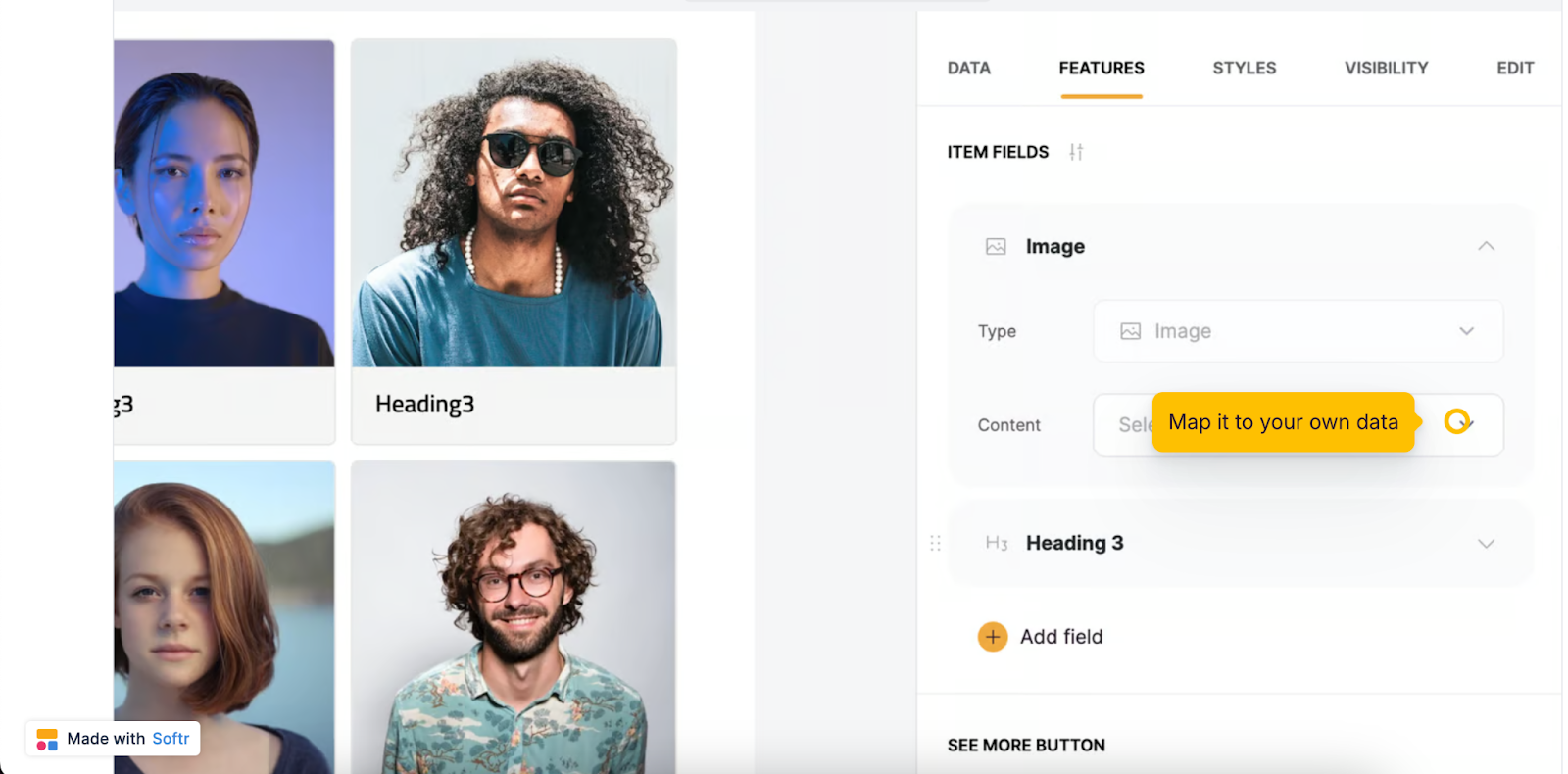
Softr occupies a unique position in the no-code landscape by specializing in transforming Airtable databases into functional websites and web applications. This platform caters to businesses and individuals who rely on Airtable for data management and seek to create user-facing interfaces without delving into traditional coding.
Key Features:
- Seamless Airtable integration
- Web and app creation from Airtable data
- Suited for client portals, internal tools, and directories
Softr's strength lies in its ability to leverage existing Airtable structures, making it an efficient solution for organizations already invested in this ecosystem. It excels in creating data-driven, dynamic web experiences without requiring users to learn complex web development skills.
Advantages:
- Deep Airtable integration
- User-friendly interface
- Diverse template selection
Challenges:
- Primary focus on Airtable limits flexibility with other data sources
- Advanced features may require higher-tier subscriptions
Pricing: Softr offers a free tier for basic use, with premium plans beginning at $49 monthly.
This platform is particularly valuable for businesses that have already adopted Airtable as their primary data management tool. It allows these organizations to extend the utility of their data by creating public-facing interfaces or internal tools without the need for dedicated development resources.
Softr's user-friendly approach makes it accessible to team members who may not have a technical background, enabling broader participation in the creation of web-based tools and interfaces. This can lead to more rapid deployment of solutions and greater agility in responding to business needs.
However, the platform's tight coupling with Airtable may be limiting for users who require integration with diverse data sources or those seeking a more generalized web development tool. Additionally, users should be aware that accessing more advanced features may necessitate upgrading to higher-tier plans.
In summary, Softr presents an excellent solution for Airtable-centric organizations looking to create web interfaces quickly and efficiently. It bridges the gap between data management and web presence, offering a streamlined path from spreadsheet to functional website or application. While its specialized nature may not suit all use cases, for those within its target audience, Softr offers a powerful and accessible tool for extending the value of their Airtable data.
Shopify: Empowering E-commerce for Businesses of All Sizes

Shopify stands as a pioneering force in the e-commerce platform landscape, offering a comprehensive solution for creating and managing online stores. This platform caters to a diverse range of users, from individual entrepreneurs to large-scale enterprises, providing a robust set of tools for building and scaling digital storefronts without the need for coding expertise.
Key Features:
- Intuitive drag-and-drop store builder
- Integrated tools for product management, inventory tracking, and order processing
- Extensive app marketplace for enhanced functionality
- Secure hosting with SSL encryption
Shopify's standout quality is its ability to simplify the complex process of e-commerce management, making it an exceptionally accessible tool for those new to online retail. This approach is particularly valuable for small businesses, artisans, and growing brands looking to establish or expand their online presence.
Advantages:
- User-friendly interface suitable for non-technical users
- Comprehensive e-commerce toolkit in a single platform
- Robust security features and reliable hosting
Challenges:
- Transaction fees for those not using Shopify Payments
- Advanced customization may require specialized knowledge
- Content management system limitations
Pricing: Shopify offers plans starting at $24 per month for basic features, with higher tiers available for more advanced needs.
This platform excels in scenarios where quick store setup and scalability are priorities. For instance, a local boutique could rapidly launch an online storefront, or a growing brand could easily manage inventory across multiple sales channels.
Shopify's approach significantly reduces the technical barriers typically associated with e-commerce. By providing a centralized platform for store management, inventory control, and order processing, it allows business owners to focus on product development and customer relationships rather than technical infrastructure.
However, users should be aware of Shopify's limitations. The platform's reliance on its own payment system for avoiding transaction fees may not suit all business models. Additionally, the constraints on advanced customization without technical knowledge may be restrictive for brands with highly specific design requirements.
In summary, Shopify offers a powerful and accessible solution in the e-commerce space, particularly for businesses looking to quickly establish or expand their online retail presence. Its comprehensive toolkit and user-friendly interface make it an excellent choice for those prioritizing ease of use and scalability in their e-commerce strategy. While it may not suit all online retail needs, for its target users, Shopify provides an efficient and robust path to successful online selling.
Glide: Turn Spreadsheets into Mobile Apps
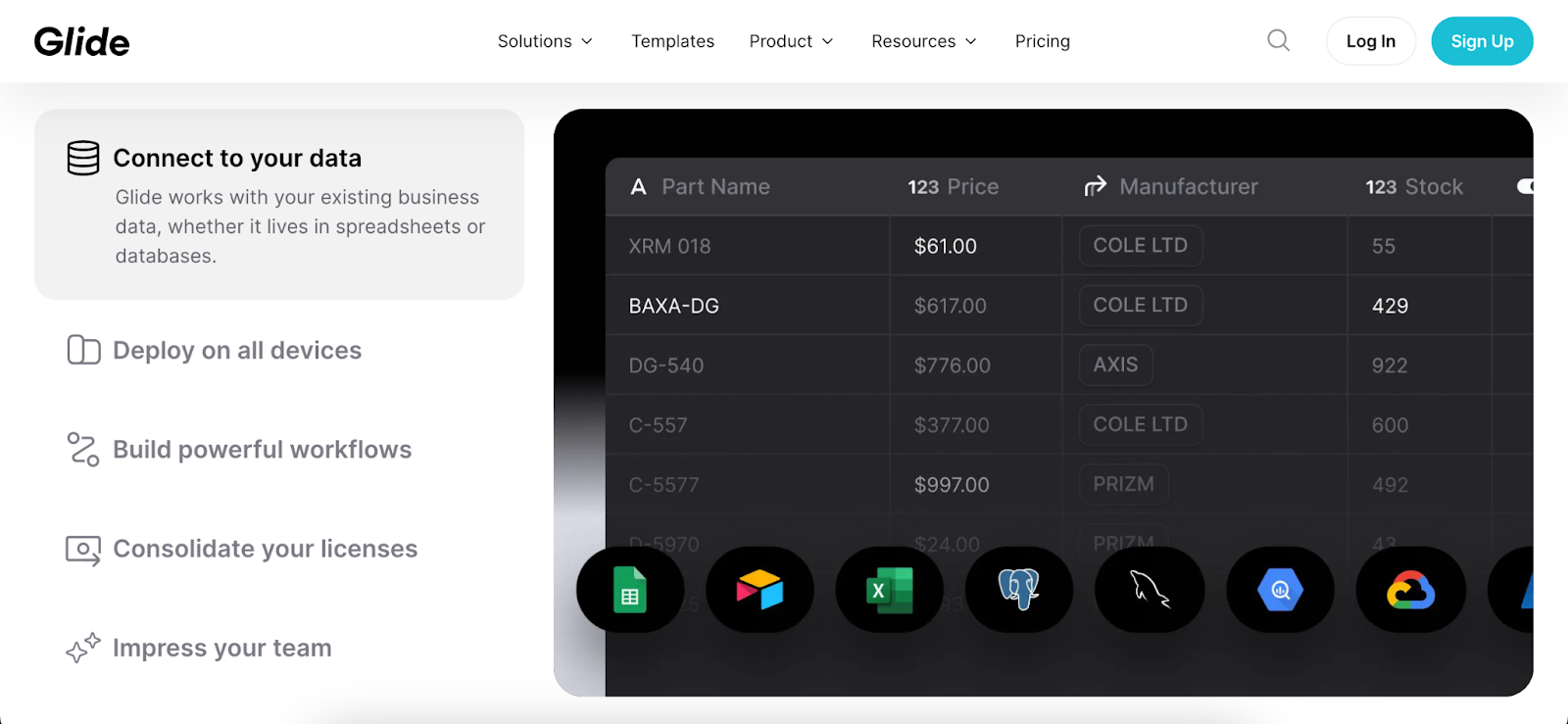
Glide represents a novel approach in the no-code ecosystem, specializing in the rapid conversion of Google Sheets data into functional mobile applications. This platform bridges the gap between familiar spreadsheet interfaces and mobile app development, offering a unique solution for quick, data-driven app creation.
Key Features:
- Direct app creation from Google Sheets
- Real-time data synchronization
- Designed for rapid deployment of simple, data-centric apps
Glide's standout quality is its ability to leverage existing data structures in Google Sheets, making it an exceptionally accessible tool for those already familiar with spreadsheet management. This approach is particularly valuable for businesses, educators, and event organizers who need to quickly mobilize their data.
Advantages:
- Streamlined app creation process
- Continuous, real-time data updates
- Low barrier to entry for non-technical users
Challenges:
- Primarily suited for data-driven applications
- Limited design customization options
Pricing: Glide offers a free tier with basic functionality, while paid plans start at $49 monthly.
This platform excels in scenarios where rapid app deployment and real-time data management are priorities. For instance, a small business could quickly create an inventory management app, or an event organizer could develop a dynamic schedule app that updates attendees in real-time.
Glide's approach significantly reduces the time and resources typically required for mobile app development. By utilizing familiar spreadsheet interfaces, it allows team members without coding experience to contribute directly to app creation and management.
However, users should be aware of Glide's limitations. The platform's focus on data-driven apps may not suit all use cases, particularly those requiring complex user interfaces or advanced functionalities. Additionally, the constraints on design customization may be restrictive for brands with specific visual identity requirements.
In summary, Glide offers a unique and powerful solution in the no-code space, particularly for organizations looking to quickly mobilize their data into functional apps. Its innovative approach to app creation from spreadsheets makes it an excellent choice for those prioritizing speed, simplicity, and real-time data management in their mobile app strategy. While it may not suit all app development needs, for its target use cases, Glide provides an efficient and accessible path from spreadsheet to mobile application.
Unbounce: Specializing in High-Converting Landing Pages
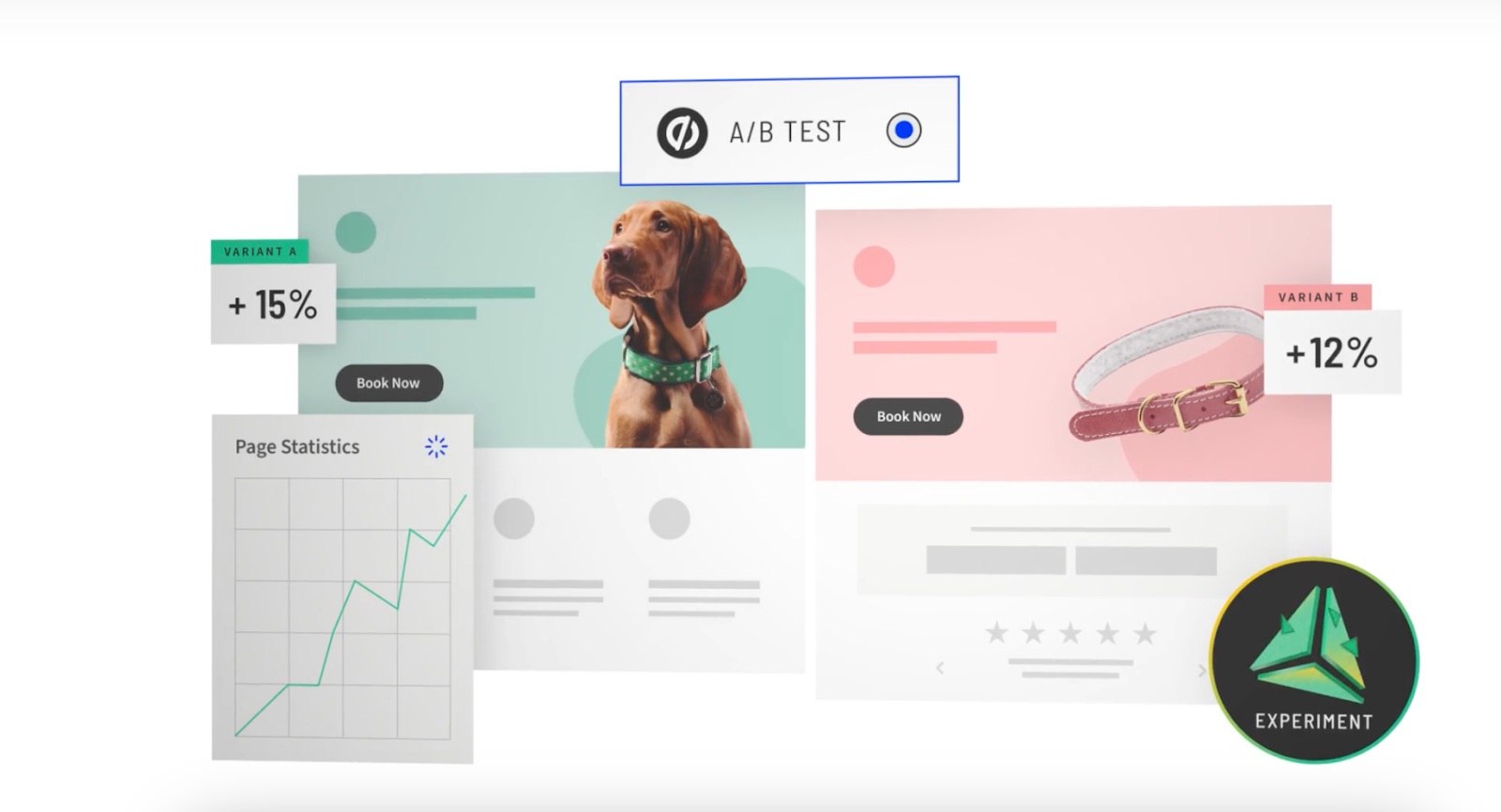
Unbounce carves out a distinct niche in the no-code landscape by focusing exclusively on the creation and optimization of landing pages. This platform caters specifically to marketers seeking to rapidly deploy and refine high-performance landing pages without delving into traditional web development.
Key Features:
- Dedicated landing page creation tools
- Built-in A/B testing capabilities
- Extensive marketing tool integrations
Unbounce's strength lies in its laser focus on conversion optimization, making it an invaluable asset for marketing campaigns and lead generation efforts. The platform's robust testing features enable marketers to continually refine their pages for maximum effectiveness.
Advantages:
- Specialized in conversion-optimized landing pages
- Comprehensive A/B testing functionality
- Seamless integration with popular marketing tools
Challenges:
- Limited to landing page creation, not suitable for full websites
- Premium pricing structure
- Potential complexity for novice users in advanced features
Pricing: Plans begin at $74 monthly, with a 14-day free trial available for evaluation.
Unbounce excels in scenarios where rapid deployment and continuous optimization of landing pages are crucial. It's particularly valuable for businesses running multiple marketing campaigns, product launches, or lead generation initiatives that require dedicated, high-converting pages.
The platform's A/B testing capabilities allow marketers to make data-driven decisions, potentially leading to significant improvements in conversion rates. This feature, combined with its integration with various marketing tools, creates a powerful ecosystem for campaign management and optimization.
However, prospective users should be aware of Unbounce's limitations. Its specialization in landing pages means it's not suitable for building full-scale websites, which may restrict its utility for businesses seeking a more comprehensive web presence solution.
Additionally, while Unbounce is designed to be user-friendly, some of its more advanced optimization and testing features may present a learning curve for beginners. This could necessitate an initial time investment to fully leverage the platform's capabilities.
In essence, Unbounce represents a powerful, specialized tool in the no-code space, particularly for marketers and businesses focused on maximizing the effectiveness of their landing pages. Its combination of rapid page creation, robust testing features, and marketing tool integrations makes it an excellent choice for those prioritizing conversion optimization in their digital marketing strategy. While it may not suit all web development needs, for its target use cases, Unbounce offers a comprehensive and effective solution for creating high-performing landing pages.
Carrd: Simple One-Page Websites

Carrd is an intuitive no-code platform for building one-page websites. It's ideal for creating landing pages, portfolios, personal websites, and other small-scale web projects. The tool's simplicity and low cost make it a great option for individuals and small businesses seeking to establish an online presence quickly and without complex features. Despite its straightforward nature, Carrd provides a variety of design choices and customization options, enabling users to create attractive and functional one-page websites.
Advantages:
- Extremely affordable.
- User-friendly drag-and-drop editor.
- Mobile-responsive designs.
Challenges:
- Limited to one-page websites.
- Fewer features compared to other builders.
Pricing: has a free plan, Pro plans start at $19 per year.
Key Takeaways on No-Code Website Builders
Selecting the right no-code website builder can profoundly influence your business's online presence. With user-friendly interfaces and robust customization options, each platform provides unique features and tools. By evaluating cost, ease of content management, and integration capabilities, you can identify the ideal builder for your business.
Discover the potential of no-code website builders and bring your vision to life online. Whether you're an entrepreneur, small business owner, or digital marketer, these tools will enable you to succeed and create an exceptional website.
Ready to begin? Sign up for a free trial with one of these leading no-code website builders and take the first step towards crafting your dream website.




